Painting Advice for Artists > If we only paint observationally and we rely on our visual perceptions, we are often wrong in our drawing and our values. Here’s why.
By Nancy Tankersley
Most of us, at one time or another, have been advised to “paint what you see.” But a quick internet search of optical illusions will give proof that what we think we see is not always accurate. If we only paint observationally and we rely on our visual perceptions, we are often wrong in our drawing and our values. That’s why I advise my students to learn the principles of painting and then paint what they know they should see. And always they will begin to see more accurately.
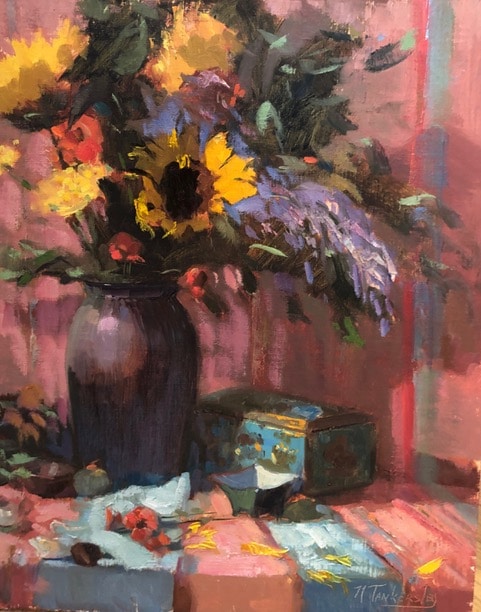
Artists with strong spatial relationship skills and the ability to accurately apply color in the correct value do exist, and for them, purely observational painting may be all they need. Even in my early years as a painter, I would occasionally get in the zone and every stroke would seem right. And then I would be surprised and disappointed when the same thing didn’t happen the next time! I had very little knowledge at the time, but I did have enough skills to paint some paintings that didn’t embarrass me and even found buyers. But as I took workshops and gradually learned the important essentials to understanding and accurately recording what I saw, my success rate in my paintings began to rise.
Here are two of my favorite examples of how our brains fool us. In the first example, the table tops are exactly the same size! It’s their orientation and the placement of the legs that trick our brains into telling us otherwise. Imagine how your drawing could suffer if you only drew your observation without checking measurements. That’s why I always say, if something doesn’t look right, it probably isn’t, and the best thing is to go back and measure, measure, measure!
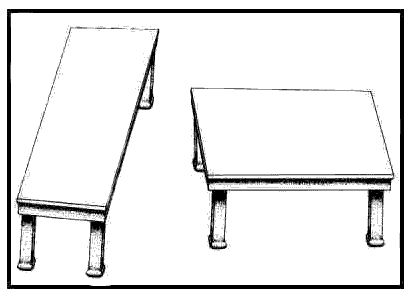
The example with the cylinder and the checkerboards is a great illusion of value. The dark square A is in the light and the light square B is in the shadow cast by the cylinder. Because A is obviously darker than the squares surrounding, and B falls in the pattern of the lighter squares, we think that A is darker than B. If you block out all of the surrounding squares you will see that Square A is the same value as square B! That’s because of the absence of light on Square B.
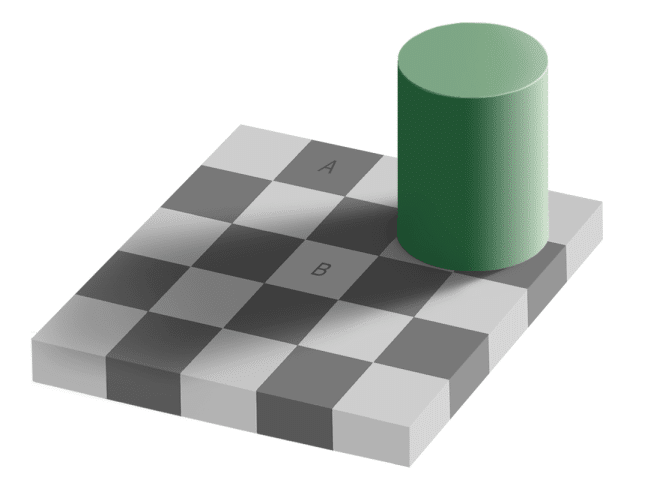
When students paint a light object such as a white hat or shirt, they almost always paint the shadow side of the light object lighter than it should be because they are thinking “this is a light object.” And then they lose the sense of form and light. So rather than using your observational skills only to judge value, perhaps the first thing you should do is ask yourself, “is that part of the object that I am painting in the light, or is it in the shadow?” If you determine this first, then your observation of the actual value you are trying to paint will be more accurate.
Painting what you see IS important, but you must also develop your analytical skills to be a good painter. Then, when those essential principles are learned and successfully applied, it’s time to sprinkle in some imagination and emotion and have fun. But always start with a good foundation!
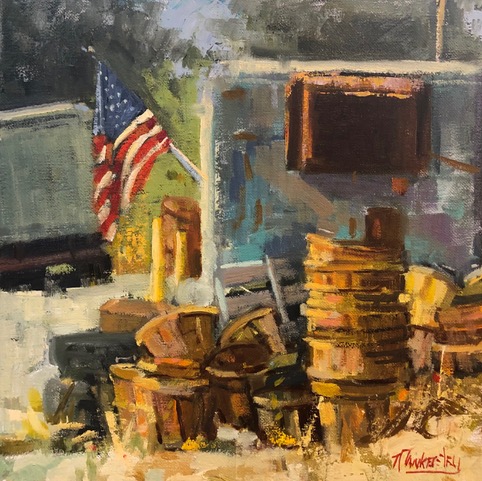
***
“If You Learn The Basic Principles, You’ll Be Able To Paint Anything Well” – Nancy Tankersley
Regardless of the type of painting you do, you must build a strong foundation of essentials.
Preview the art video workshop “Essential Painting Principles” with Nancy Tankersley here:
Visit EricRhoads.com to find out all the amazing opportunities for artists through Streamline Publishing, including:
– Online art conferences such as Plein Air Live
– New video workshops for artists
– Incredible art retreats
– Educational and fun art conventions, and much more.
> Subscribe to Plein Air Today, a free newsletter for artists
> Subscribe to PleinAir Magazine so you never miss an issue

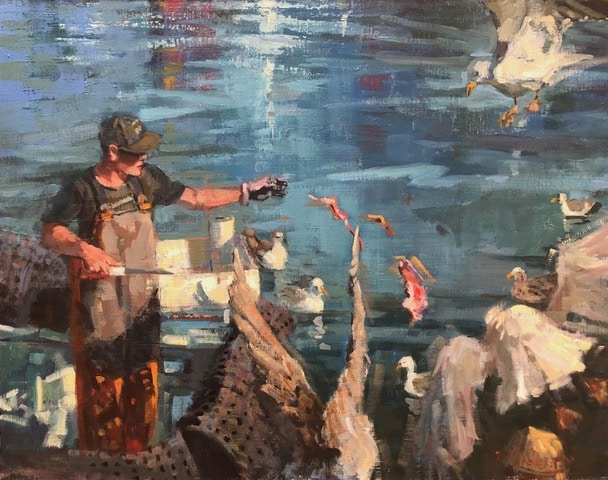




Every now and then there is a really worthwhile article here. Nancy’s is one. I live in South Africa. To purchase DVD’s from the US is very expensive for us. I have had to teach myself the road to realism by studying everything worthwhile on the net and in some very expensive books. David Leffel. . Mostly
info on US artists. You are fortunate there, as you have direct contact with numerous others. Learning
the principles of oil painting is one essential aspect, conceptualizing a work properly before one starts, is
as important ? Nancy is probably more correct than she realizes herself regarding “looking”. I have come
to the conclusion that we do not actually see with our eyes but with our brains. The brain interprets the
impulses from the eyes. I think that is why some people can see better in 3D than others?
One wonders whether the brain can be developed in this respect ?